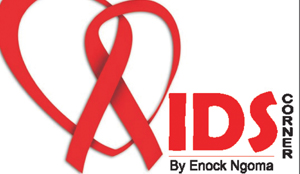 THIS week, I reproduce a press statement sent to me from Washington, DC, on May 6, 2014 which is on male circumcision studies in Africa and reads:
THIS week, I reproduce a press statement sent to me from Washington, DC, on May 6, 2014 which is on male circumcision studies in Africa and reads:
A new collection of research studies, featured in the leading open access medical journals PLOS ONE and PLOS Medicine and funded by the US President’s Emergency Plan for AIDS Relief (PEPFAR) and the Bill and Melinda Gates Foundation, provides evidence from five African countries that safe, high quality voluntary medical male circumcision (VMMC) services performed by trained healthcare professionals in low resource settings can be implemented and sustained at scale and has the potential to significantly prevent new HIV infections in adolescent and adult men.
“Just six years ago, no one could have imagined that a surgical intervention with such impact could be rolled out and scaled up so effectively, particularly in low resource settings with acute shortages of healthcare providers,” said David Stanton, director of the Office of HIV/AIDS at USAID.
“We are very pleased by these findings; they affirm that we are able to deliver a highly effective HIV prevention intervention. At the same time these findings challenge us to work even harder to achieve our goals.
The new PLOS collection, Voluntary Medical Male Circumcision for HIV Prevention: Improving Quality, Efficiency, Cost Effectiveness, and Demand for Services during an Accelerated Scale-Up, documents the application of preliminary findings into a program aimed to circumcise 20.3 million boys and men in 14 priority countries.
Estimates from UNAIDS and PEPFAR in 2011 demonstrate that if these targets are achieved by 2016, it is possible that 3.4 million new HIV infections will be prevented, saving the lives of thousands of men, women and children and averting over $16 billion in medical treatment costs in over 15 years.
As of the end of 2013, PEPFAR has supported countries in eastern and southern Africa to perform more than 4.7 million VMMC services for HIV prevention.
With an estimated 1.6 million people in sub-Saharan Africa becoming newly infected each year—a phenomena that still outpaces the expansion of treatment—increasing the number of males who are circumcised is a major programmatic priority for the US Government under PEPFAR.
This programme is also aligned with PEPFAR’s broader effort to scale up combination prevention—a strategy that includes other key scientific interventions such as preventing mother-to-child transmission and treatment as prevention, to achieve an AIDS-free generation.
In 2007, the World Health Organization and UNAIDS issued recommendations to implement VMMC in regions with high HIV infection and low male circumcision prevalence. Since then, PEPFAR has been at the forefront of providing technical and financial support to 14 priority countries in Eastern and Southern Africa to introduce, launch and accelerate the scale-up of this effective HIV prevention intervention.
In December 2011, a collaborative effort undertaken by UNAIDS, PEPFAR, WHO, the Bill and Melinda Gates Foundation and the World Bank, led to the launch of a five-year action framework to further accelerate the scale-up of VMMC in these priority countries.
“What has been achieved in a relatively short period of time is remarkable and a testament to what the international community can accomplish if it works together with countries hardest hit by the epidemic,” said Ariel Pablos-Mendez, assistant administrator for global health at USAID. “Through its work under PEPFAR, USAID is committed to improving health systems that are able to deliver a high volume of VMMC services as well as services that are efficient, cost-effective and in high demand. The VMMC story holds great lessons for many other public health interventions.”
The papers published under the PLOS Collection summarize many of the lessons learned during the accelerated scale-up of VMMC as several countries have moved to high volume VMMC services.
As the findings point out, providing VMMC services offers a unique opportunity to reach men as never before and often for the first time in their lives, with critical sexual and reproductive health services and to link them with HIV care and treatment when necessary.
The PLOS Collection is a joint collaboration between publishers, PLOS ONE and PLOS Medicine, as well as PEPFAR through the U.S. Agency for International Development (USAID), the US Centers for Disease Control and Prevention (CDC), the US Department of Defense, and the Bill and Melinda Gates Foundation. USAID and CDC implementing partners as well as local partners at the Ministries of Health in Lesotho, Kenya, South Africa and Zimbabwe also contributed to this Collection.
For more information, visit PLOS.org and read fact sheets on quality of services, costs, demand generation and efficiencies, which highlight key findings from the Collection.
For comments, write to knoxngoma@gmail.com or SMS/call 0955883143






